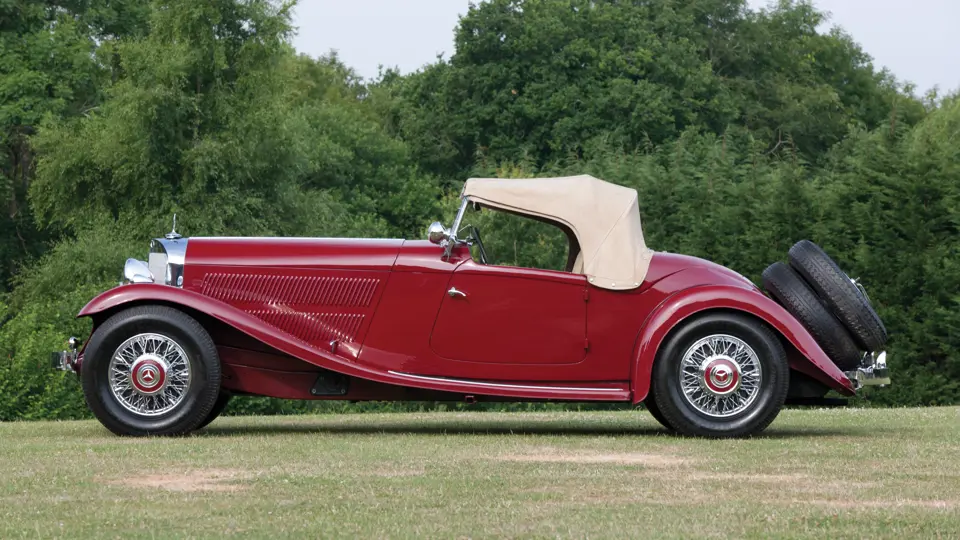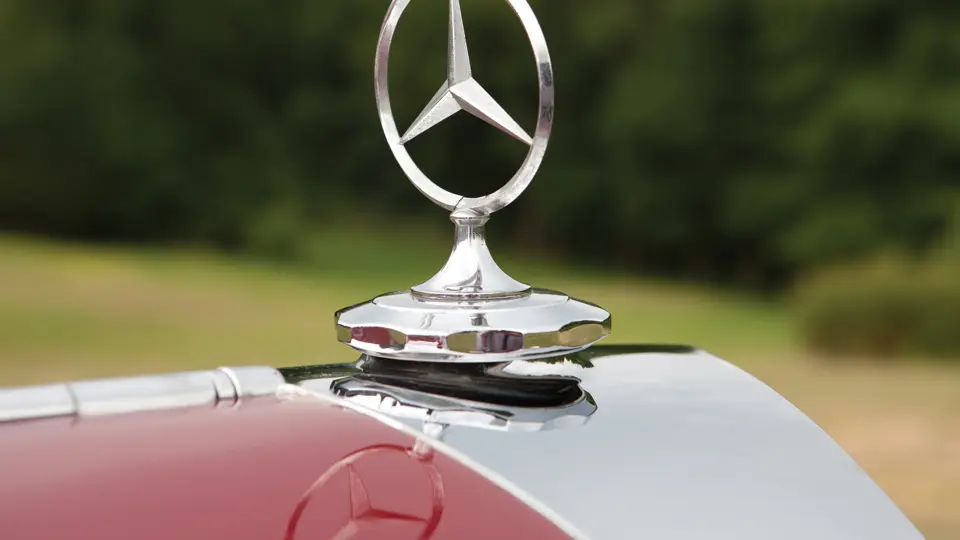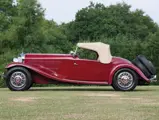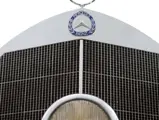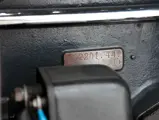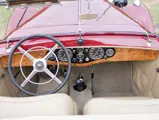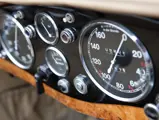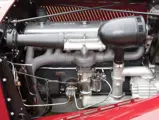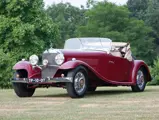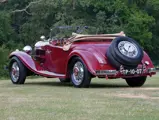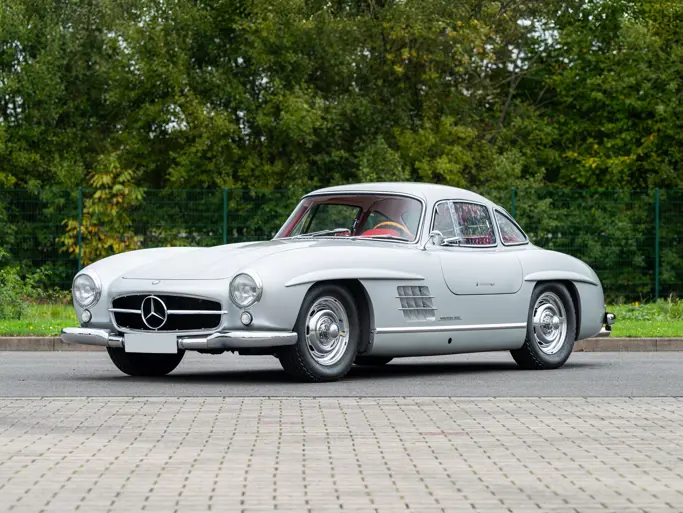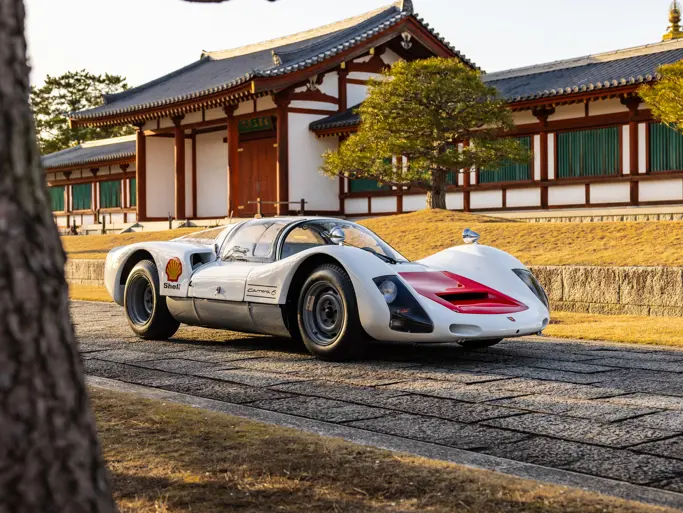120 hp, 3,820 cc inline overhead-valve eight-cylinder engine, four-speed manual transmission, independent front and rear coil-spring suspension, and four-wheel hydraulic drum brakes. Wheelbase: 3,150 mm
Mercedes-Benz introduced the Type 380 at the Berlin Motor Show in February 1933. It was very limited in production and, therefore, withdrawn only one year later, with a scant 154 units finding owners. By some opinions, the model was a failure. In retrospect, it offered several technological advances in suspension, whilst the very special supercharged examples provided a thrilling boost in power.
The 380, or W22, is referred to as the 15/90 HP for naturally-aspirated versions and the 15/120 HP for the supercharged variant. The W22 engine began as the same 3,820-cubic centimetre inline eight seen in earlier models, but it now utilised overhead valves rather than side valves. At 120 horsepower in supercharged form, the 30 per cent jump in power was significant. This upgrade, along with its reported top speed of 130 km/h, immediately established the model’s credentials as technologically advanced.
Additionally, this was the first Mercedes-Benz to incorporate an independent suspension configuration with a double wishbone and ball joints in the front axle and a double-joint swing axle with coil springs at the rear. The combined advanced design in suspension, coupled with the kompressor, made for an exhilarating and smart ride in 1933. The sporting Mercedes-Benz 380 K could be considered a logical bridge between the six-cylinder engine 290 model and the massive 770 'Grosser' model. Further, it is arguably a successor to the famous Type S and a predecessor to the 500 K, which would be introduced just one year later.
This 1933 Mercedes-Benz 380 K Sport Roadster is the most exclusive of all 380 K body styles, and it is believed to be one of only approximately 15 built between 1933 and 1934. It is elegant, it is powerful, and it is exquisite. The body lines foreshadow those which would be seen on the 500 K and 540 K, with a flowing, Teutonic design. As expected, the panels are straight with very good paint, and the doors shut well, like the proverbial bank vault. Michelin Comfort Cord tyres have been fitted on the chrome wire wheels. The exterior chrome and brightwork is polished and show little wear, if any. A chrome Hella spotlight adorns the driver’s windshield pillar, and a single centred lamp is fitted between the headlamps.
The interior is wrapped in tan leather upholstery and has matching carpeting. The package compartment behind the seat gives access to the lower rumble seat area, for larger travel bags. Tan leather also envelops the compartment area of the rumble seat, and the driver is well informed by a proper assortment of gauges, including an 85-litre fuel gauge, a 4000 rpm tachometer, a 12-volt Kraftuhr clock, and temperature and oil pressure units. Only 5,806 kilometres are showing on the odometer, presumably since restoration, and all-weather driving should never been an issue, as a cloth top boot can be found within a storage pocket, the Plexiglas windscreens are mounted in heavy chromed frames, and a single smoked-glass visor is provided for the driver.
As with the passenger compartment, the engine bay is tidy and clean, with the aluminium supercharger proudly displayed, and all other components of the drivetrain and suspension have been cleaned and detailed, with minimal soiling from road or storage efforts. This offering, like other Mercedes-Benz models presented, is elegant and refined. However, few of these examples can offer the level of exclusivity from the limited production and technological advancement of the era.
It is to be noted that, based on the VIN submitted, no additional information could be found by the Mercedes-Benz Classic Center.





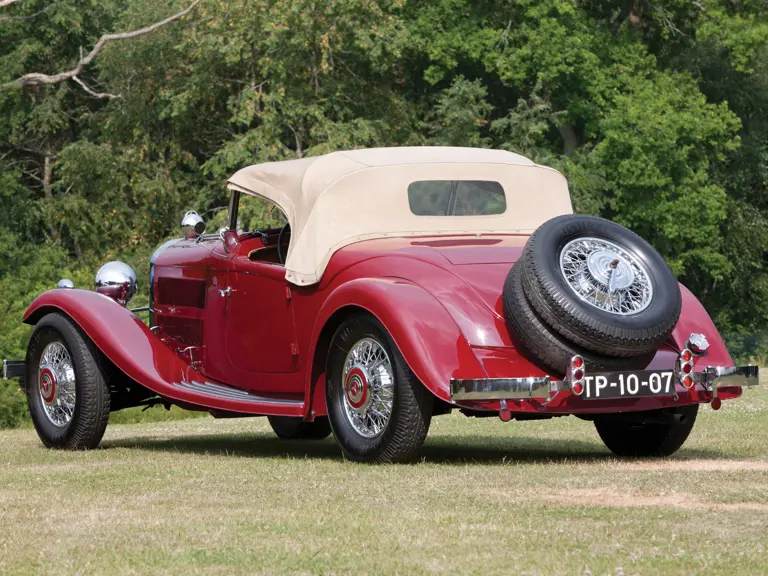
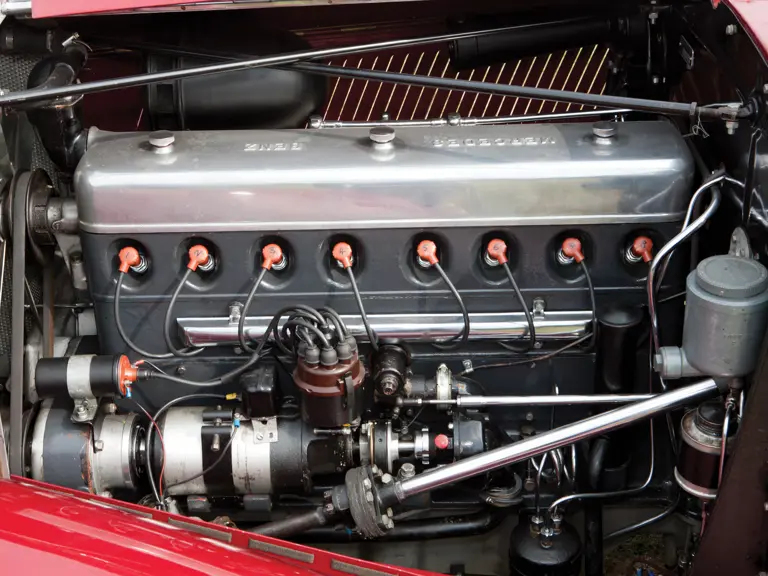
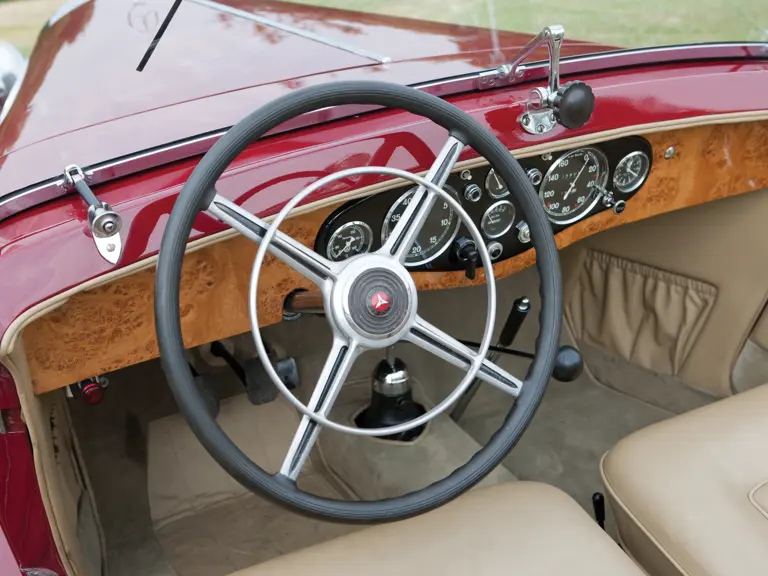
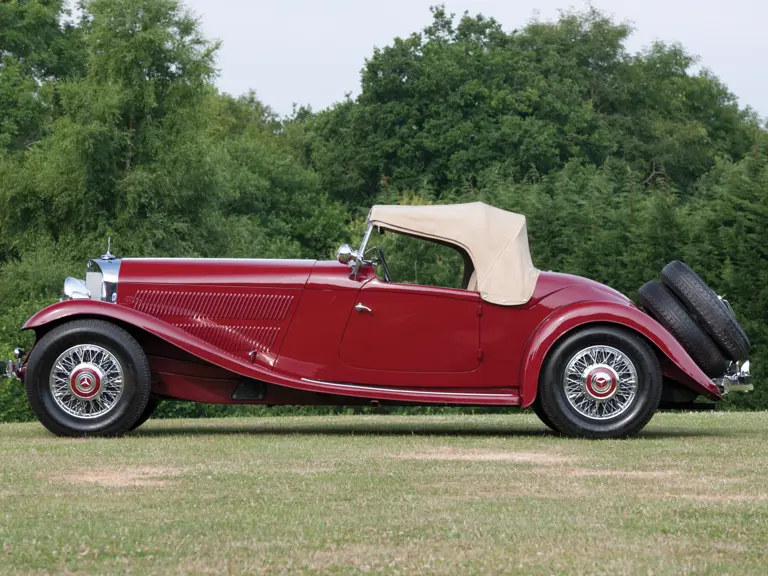
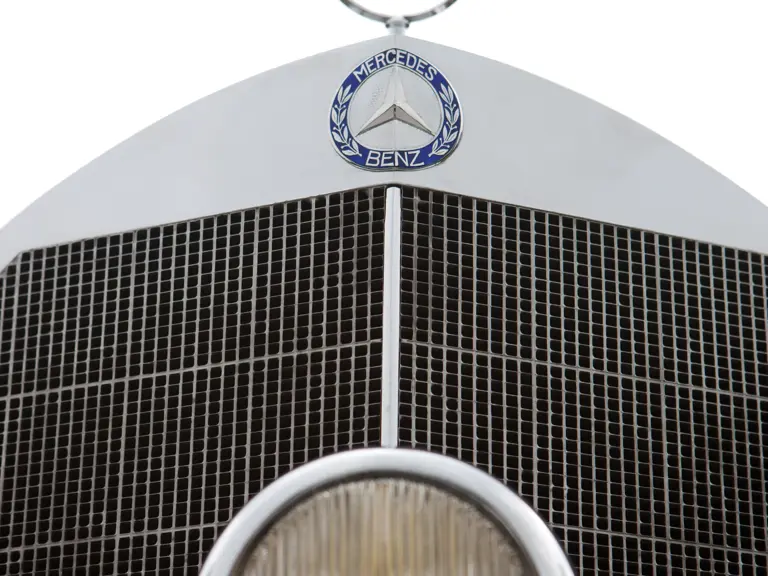




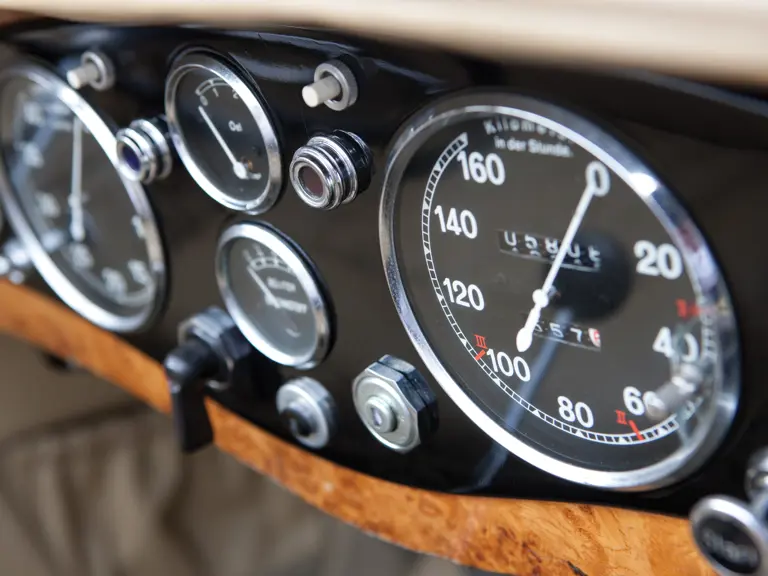
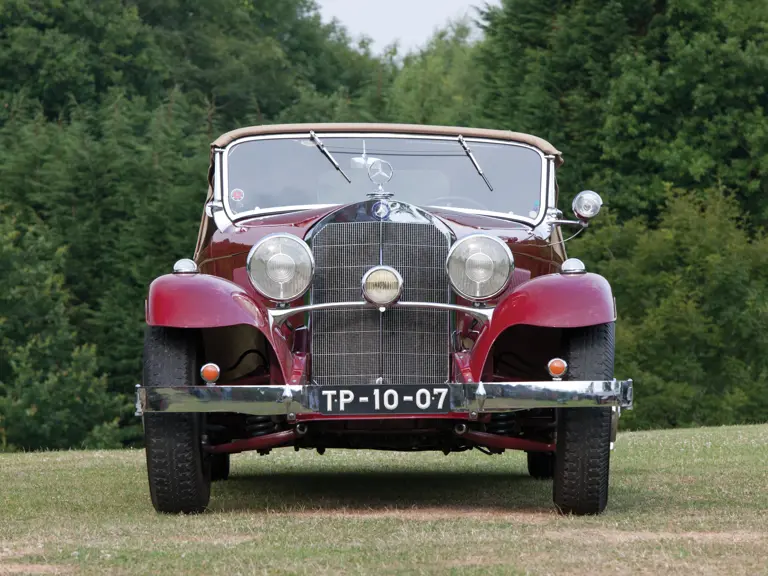
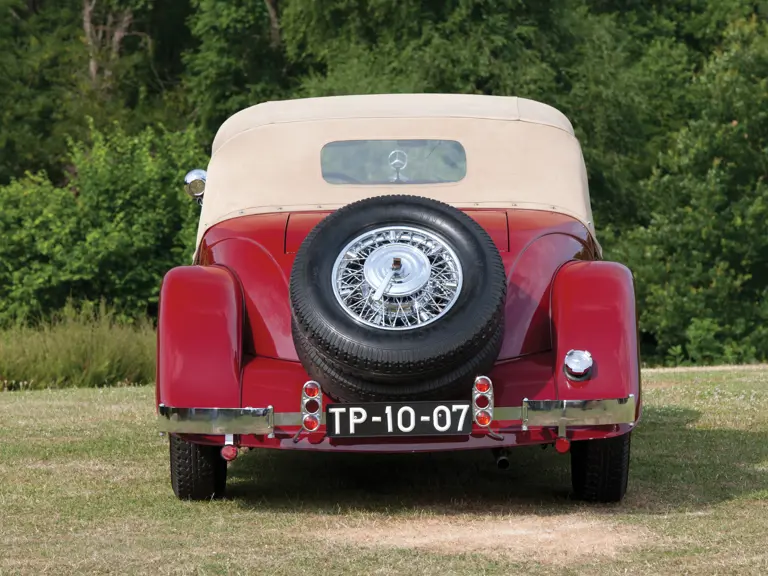
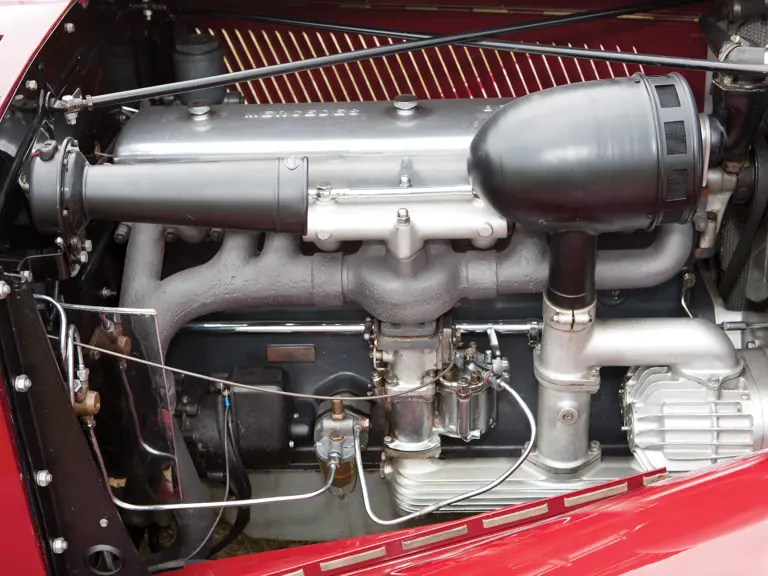


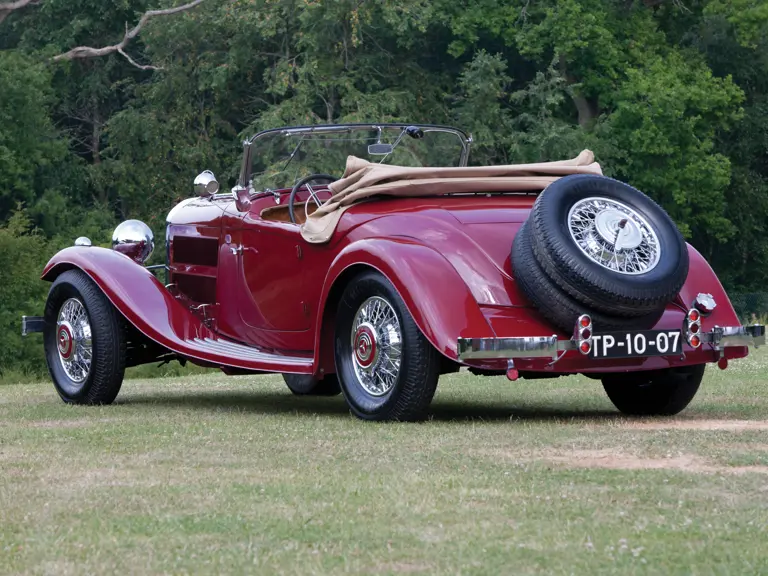

 | London, United Kingdom
| London, United Kingdom
